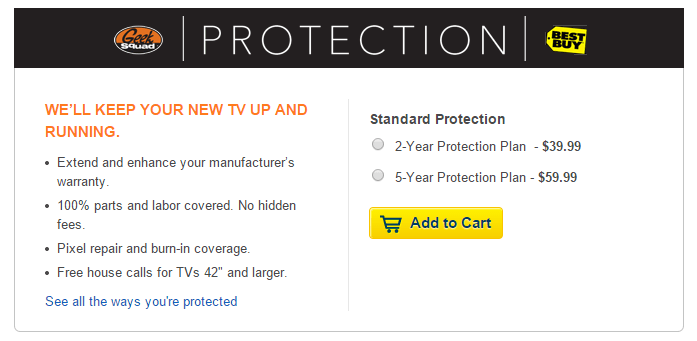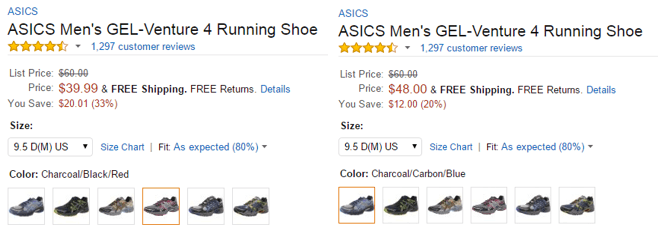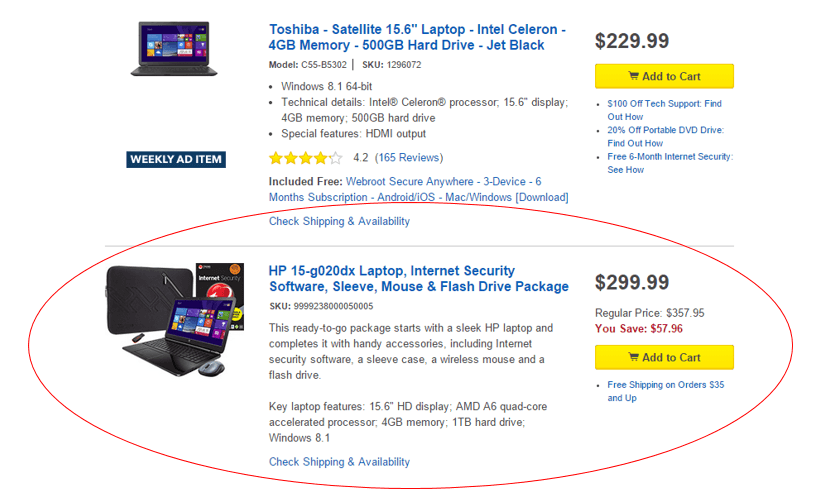Pricing, and specifically the issue of raising prices, is a very complicated part of eCommerce. It’s something merchants often think about with dread.
However, there are times that it’s necessary to raise prices in order to keep up with rising costs of supplies, increase profit margins, take your eCommerce store to a new level, or for a number of other reasons.
Frequently, merchants raise their prices on a whim without doing the appropriate research or employing a pricing strategy.
The results? A loss of customers, and a decrease in sales.
However, price hikes don’t have to go hand-in-hand with a decrease in sales.
In this post, we’ll take you through how to decide it’s time to raise your prices and how to do it right (using several pro pricing strategies) to ensure you not only cut your losses but increase your profits as well.
We will cover the following:
Let’s jump in!
Is It Time to Raise Your Prices?
Before raising your prices, you need to do the research to determine if your timing is right. This means:
- Reviewing and researching costs
- Diving into your profit margins and sales numbers
That means you need to know the prices of your materials, production, shipping, packaging, etc., so that if the price of one part of your production process rises, you will be prepared to respond.
For example, if you sell clothes and the price of fabric rises, and you continue selling your products at the same price, you will definitely see a shrinking profit margin or even end up with a loss.
You also need to stay on top of your profit margin and your sales levels for specific products.
A product that is selling well might be a good candidate for a price raise so you can increase your profits on it. Additionally, you will want to keep an eye on new products.
Example: If you started selling a new product at a lower price so that it could gain traction, you have to know when it has actually caught on so that you’ll know when to raise the price.
Keeping tabs on your sales and profits, aside from obviously being necessary to your business, will also give you a good idea of when you can safely raise your prices.
Bonus Tip: Don’t forget to review your customer service strategies and your eCommerce terms and conditions at this point. You need to make sure that your support team is ready to field any queries you have. Customer service places a key role in your overall product value – but more on that later.
—
Now that we know the when, let’s look at the how of price hikes. These top six strategies offer a variety of ways to increase price points for products.
How to Raise Prices Without Losing Customers
Price Strategy #1: Just Raise Your Prices
The first method you could use for raising your prices is the simplest: just raise your prices! Of course, that doesn’t mean you should raise your prices at random and not say anything to your customers.
That would be bad.
So what should you do?
You should do your research, determine when and by how much you need to raise your prices, and then act with full transparency. This means you should raise your prices and tell your customers why you have implemented a price hike.
This works best for a raise in price that comes as a result of rising costs.
If you sell apparel and there has been an increase in the cost of fabric, you can simply tell your customers the reason for the increasing price.
You can announce this in a blog post, on social media, in your eCommerce ads, or even on your website.
You could also choose not to mention it directly to your exisiting customers, and instead prepare a formal response to send to each customer that may inquire.
- The advantage: You are being very honest with your customers. As long as you’re not lying about the rising costs, there is no reason for them not to believe you and understand your decision. They will also be able to see that you acted honestly from rising prices among your competitors.
- The disadvantage: Customers may look to competitors who did not mention their price increase, perceiving them as a better deal.
If your prices remain competitive though, this problem shouldn’t really affect you.
Price Strategy #2: Raise Prices Gradually
If you want to lessen the blow of a price rise, you might want to consider raising your prices gradually. This way there won’t be a shock caused by a sudden big change.
The disadvantages?
Raising your prices gradually means that you will be raising your prices more frequently as well. This frequency might actually cause you more problems.
- It might be more noticeable to your existing customers
- It will be harder for you to explain your price raises to your customers than if you had done it all in one shot
Price Strategy #3: Increase the Perceived Value of Your Products
A great way of getting away with a price raise is by increasing the perceived value of your products. Something that has a greater “value” can be sold at a higher price.
How can you do this?
Let’s say you are an eCommerce fashion brand that specializes in jeans.
You could release a “new line” of jeans that are essentially the same as your current line of jeans in terms of production costs, but with a superficial change in terms of appearance. You could then market your new line as “Premium Jeans.”
What sets your Premium Jeans apart from regular jeans? They’re made with better fabric, they’re more durable, the color is bolder.
Choose an added value as the focus of your new product line, and highlight it in your advertising.
For example: Gap uses its “Limited Edition” eCommerce CTA copy in section to sell “premium products” instead of implementing a price hike on existing products.
Jeans in the Limited Edition section cost around $40 more than Gap’s standard jeans.
By increasing the perceived added value of your product, you can sell something that costs the same as your other products at a higher price. This is partially effective for peak holiday shopping season and BFCM campaigns.
Price Strategy #4: Increase the Actual Value With Added Services
Another way of adding value is by actually adding value.
What does this mean?
If you can add services above and beyond the physical product you sell, you can add these costs in as premium prices.
For example, you could add in the option for gift wrapping, a personalized card, or a warranty. These are services that are not related to the product itself but add value to the purchase.
By charging a profit on these premium services, you can increase your profit margin.
Bonus Hack: Invest in Shopping Experience and Customer Satisfaction
Here’s the thing, your shopping experience affects not only your overall customer satisfaction, but also your brand’s perceived value.
No matter what pricing strategy or combination thereof you decide on, it is vital that your shopping experience is designed for customer satisfaction. This means streamlining the experience for everyone from first-time site visitors to long-term customers.
Why?
Because your brand identity determines its perceived value, and the better this value is, the more customers will be willing to pay for your products.
The same is true of your customer service. Suppose you want to not only get customers to pay more initially but become long-term, loyal customers. To do this, ensuring your customer’s satisfaction goes beyond their expectations is an absolute necessity.
Here are two guides to help you do just that:
Price Strategy #5: Add Premium Price Options on Your Products
An additional added value method you could use is to add different price options to your products.
For example, you could charge different amounts for special colors or added features (especially for electronics).
This pricing strategy gives you two advantages:
- For customers who are looking for the lowest price, there is a lower price. You also have a product for customers who are willing to spend more. This can be a great way to make more profit out of the same product.
- It gives you an anchoring price.
Think about it like when you get popcorn at the movies.
You choose between the following options: Small – $7, Medium – $8, and Large – $8.50. If you’re considering getting a medium, you’ll probably think to yourself, “Hey, it’s only another 50 cents to get the large, so I might as well get that.”
On the other hand, if you just saw $8.50 as the price, you would probably think that it’s too much money for popcorn.
This little psychological trick that your mind plays on you is called anchoring. You anchor your expectations for price on the prices that you already have in front of you.
By adding premium options to your product pages, you will achieve the same effect as the popcorn. People will see the base price and use it as their anchor when considering the premium options.
Price Strategy #6: Offer Multi-Product Packages
If you sell related products, you can put together product bundles that offer added value to your customers.
For example, if you sell computers, you could create a bundle that contains a computer, a mouse, and a keyboard. If you sell clothing, you could sell complete outfits together.
Here’s a sample bundle from Best Buy’s website:
You can put this on your site as if it were a regular product, or you can add it on the bottom of your product pages as an upsell option.
Either way, this bundle will result in a larger sale for you than you would get for an individual product price hike.
Your Turn
When the time comes for raising prices in your store, make sure that you think about the different methods available to you. Consider which option will fit best with your store and which strategies have worked for you in the past when implementing a price hike.
To recap, here’s how to raise prices without losing customers:
- Just raise your prices
- Raise prices gradually
- Increase the perceived value of your products
- Increase the actual value with added services or products
- Add premium-priced products
- Offer multi-product packages
It’s tough (or impossible) to predict how each existing customer will react to a price change or how new shoppers (the market) will respond.
However, you can test each of these methods. This will give you the best chances of not only avoiding a negative reaction but actually boosting your profits.

Zack is a social media enthusiast who loves all things digital. He is the inbound marketing manager at StoreYa where he spends his days searching for the newest social marketing scoop. If you’d like to chat with him, feel free to connect with him on any social platform.
Recommended articles
 Facebook Ads for eCommerce: 16 Strategies, Examples & Tips
Facebook Ads for eCommerce: 16 Strategies, Examples & Tips
 How to Build a Winning eCommerce Ads Strategy
How to Build a Winning eCommerce Ads Strategy
 Google Ads for eCommerce: Everything You Need to Know
Google Ads for eCommerce: Everything You Need to Know
 10X Your Traffic with PPC Management Software
10X Your Traffic with PPC Management Software
Comments
Powered by Facebook Comments







